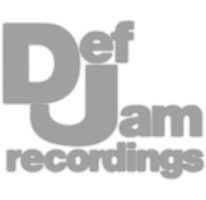When including vocal effects it’s best to break down the processing into 3 types: spectral, dynamics, and temporal. Spectral processing like equalization and distortion should come first, then you should introduce dynamics processing like compression, and lastly, you should use temporal processing like reverb.
Today we’ll cover 3 plugins that our subscribers seem to recommend a lot. We’ll cover the functionality of each one of these plugins, and listen to them on some various genres to hear how they sound.
Today we’ll look at what might be the most advanced limiter plugin on the market. Whereas other limiters focus on the aesthetics or the design, this one focuses primarily on functionality and giving engineers the most freedom as possible.
Subtractive EQ - Weiss EQ1: $549 De-essing - Weiss De-Ess: $199 Subtractive EQ - Oeksound Soothe 2: $219 Tape Emulation - u-he Satin Tape: $129
Some of the plugins on this list have been around for a while, but a couple are new - so even if you’ve been following free plugins for a while, there’s bound to be one here that you haven’t looked into yet.
Using saturation is easier than it might seem at first. Introducing the effect and determining when enough is enough, can be challenging at first.
If you want to de-ess your vocal, the easiest way to accomplish it is by using a de-esser plugin; these plugins work like a compressor, but just on sibilance-based frequencies. For better results, you can manually edit these sections with clip-gain, but this can be tedious.
Mastering a song isn’t easy. Mastering a song with only compressors should be impossible - but, there are a lot of great plugins out there to make it happen.
Quick Answer When mastering beats or instrumental that you want to sell, it’s best to master to a higher loudness but still leave enough headroom for a vocal. Additionally, it helps to carve out some room for the vocal by attenuating roughly 2kHz by 2dB on the mid image.
If you’re looking for some great free plugins that you can use to mix your vocals, take a look at these 6.
When applying equalization to your master, it helps to know exactly what you’re doing, how what your applying is affecting the signal, and how specific equalizers will offer unique and useful functionality.
Stereo width is accomplished in your master by utilizing delay-based stereo expansion; with delay various plugins that create the perception of width. Unlike mixing, mastering calls for very precise and controlled stereo expansion, as it’s easy to overuse the effect, or expand the “wrong” parts of the signal.
Free tape machine plugins are hard to come by. They might be harder to code or get a decent sample or IR of - regardless, we wanted to find a few that you can use for your mixes and masters.
To create punchy sub-bass in your master you can use a resonance filter with a high-pass filter around 20Hz, utilize harmonic distortion, try a sub-frequency generator, or compress and amplify the harmonics directly above your sub-frequencies. These techniques will work well but in different circumstances.
Mastering music loudly and clearly can be accomplished by utilizing the correct limiting settings and by taking certain precautions throughout the mastering process. When mastering loudly you’ll want to use lookahead and oversampling, low-level compression and transient shaping, and set a release time of roughly 50 milliseconds during limiting.









